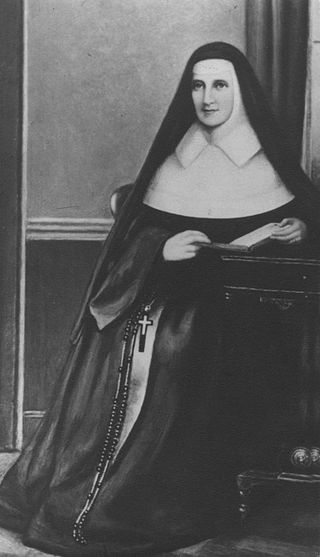
The Sisters of Mercy is a religious institute of Catholic women founded in 1831 in Dublin, Ireland, by Catherine McAuley. As of 2019, the institute has about 6200 sisters worldwide, organized into a number of independent congregations. They also started many education and health care facilities around the world.

Frances Xavier Cabrini, also called Mother Cabrini, was an Italian-American Catholic religious sister. She founded the Missionary Sisters of the Sacred Heart of Jesus, a religious institute that was a major support to her fellow Italian immigrants to the United States. She was the first U.S. citizen to be canonized a saint by the Catholic Church, on July 7, 1946.

Elizabeth Ann Bayley Seton was a Catholic religious sister in the United States and an educator, known as a founder of the country's parochial school system. After her death, she became the first person born in what would become the United States to be canonized by the Catholic Church. She also established the first Catholic girls' school in the nation in Emmitsburg, Maryland, where she likewise founded the first American congregation of religious sisters, the Sisters of Charity.

Many religious communities have the term Sisters of Charity in their name. Some Sisters of Charity communities refer to the Vincentian tradition alone, or in America to the tradition of Saint Elizabeth Ann Seton, but others are unrelated. The rule of Vincent de Paul for the Daughters of Charity has been adopted and adapted by at least sixty founders of religious institutes for sisters around the world.
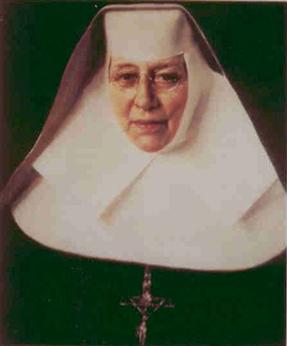
Katharine Drexel, SBS was an American Catholic heiress, philanthropist, religious sister, and educator. In 1891, she founded the Sisters of the Blessed Sacrament, a religious order serving Black and Indigenous Americans.

Mary Frances Xavier Warde R.S.M. (1810-1884) was one of the original Sisters of Mercy, a Roman Catholic religious congregation of women founded in Ireland by Catherine McAuley, and the foundress of the order in the United States.

The Sisters of St. Joseph, also known as the Congregation of the Sisters of St. Joseph, abbreviated CSJ or SSJ, is a Roman Catholic religious congregation of women founded in Le Puy-en-Velay, France, in 1650. This congregation, named for Saint Joseph, has approximately 14,000 members worldwide: about 7,000 in the United States; 2,000 in France; and are active in 50 other countries.
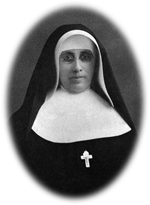
Mary Alfred Moes, was a Roman Catholic nun who was instrumental in establishing first the Sisters of St. Francis of Mary Immaculate in Joliet, Illinois, as well as the Sisters of Saint Francis of Rochester, Minnesota. She was also the founder of St. Mary's Hospital, Rochester, Minnesota, which became part of the famed Mayo Clinic. Moes had been given a vision from God of a great hospital rising out of the cornfields around Rochester–the little country town, with its one doctor. To that hospital, she had been told in her vision, would come patients from every part of the world and from every nation. And she had seen the name ‘Mayo’ respected the world over for surgical achievements.
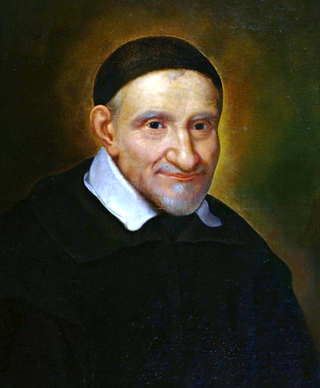
The Sisters of Charity Federation in the Vincentian-Setonian Tradition is an organization of fourteen congregations of religious women in the Catholic Church who trace their lineage to Saint Elizabeth Seton, Saint Vincent de Paul, and Saint Louise de Marillac.
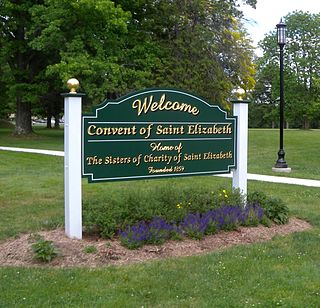
The Sisters of Charity of Saint Elizabeth are a Roman Catholic apostolic congregation of pontifical right, based in the Convent Station area of Morris Township, New Jersey, USA. The religious order was established in 1859 in Newark, New Jersey, following the example of Elizabeth Ann Seton's community that was founded in 1809 in Emmitsburg, Maryland.
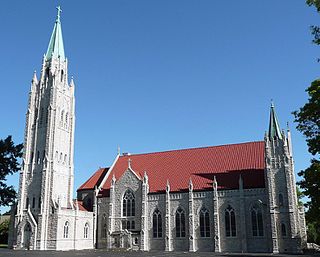
The Archdiocese of Kansas City in Kansas is a Latin Church ecclesiastical province, or archdiocese, of the Catholic Church in eastern Kansas in the United States.
The Sisters of Charity of Cincinnati were founded in 1852 by Mother Margaret Farrell George, by the separation of the community from the Sisters of Charity in Emmitsburg, Maryland. the motherhouse of the community is at Mount Saint Joseph, Ohio.

St Columba's College is an all-female Roman Catholic secondary school in Essendon, a suburb of Melbourne, Australia. It is one of four Sisters of Charity of Australia educational establishments, with St Vincent's College, Potts Point, Mt St Michael's College, Brisbane, and Catholic Ladies College, Eltham.
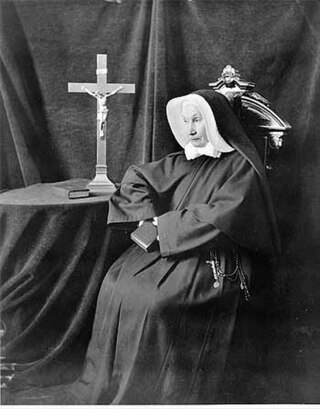
Mary Xavier Mehegan, S.C. was a Roman Catholic sister who founded the Sisters of Charity of Saint Elizabeth and opened New Jersey's first four-year college for women.
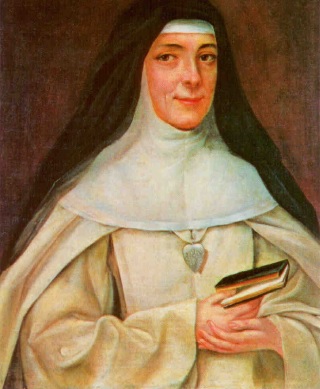
Mary Euphrasia Pelletier, born Rose Virginie Pelletier, was a French Roman Catholic nun, best known as the foundress of the Congregation of Our Lady of Charity of the Good Shepherd.

The University of Saint Mary (USM) is a private Catholic university in Leavenworth, Kansas, United States. It is sponsored by the Sisters of Charity of Leavenworth, who established it in 1923 as Saint Mary College. Though it was originally a school for women, the school is now coeducational. The mother house of the order is also on the premises. At one time the nuns' property had its own post office, Xavier, Kansas, the name honoring St. Francis Xavier.
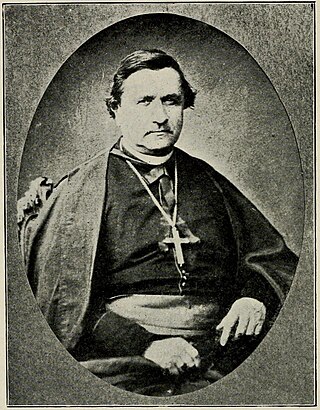
John Baptist Miège, S.J., was a Jesuit prelate and missionary. In addition to a career in education, he served as Vicar Apostolic of Kansas from 1851 to 1874.

Louis Mary Fink, O.S.B., was a German-born Benedictine monk and prelate of the Roman Catholic Church. He was the first Bishop of Leavenworth (1877–1904).

St. Mary's Medical Center is a regional hospital in Grand Junction, Colorado, in Mesa County. The hospital has 310 beds, making it the largest hospital between Denver and Salt Lake City. The hospital has a Level II trauma center.
Annie Lynch, known by her religious name as Mother Mary Xavier, was an Irish-born Australian religious sister and nurse. She was a member of the Little Company of Mary, and served as the congregation's first provincial for the region of Australasia. She oversaw the growth of the Lewisham Hospital as superior of the Lewisham convent. As provincial, she established several more hospitals in Australia and New Zealand.


















